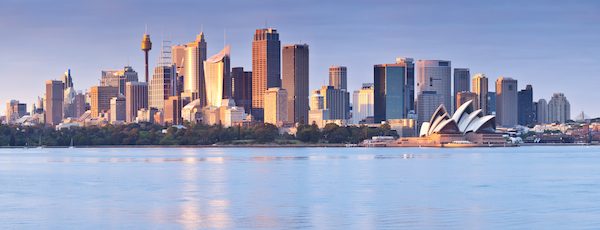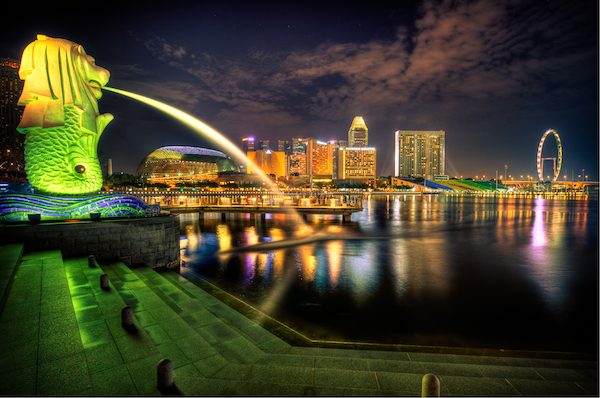Reviving Islamic Eminence in Spain Through A Message of Peace
Khalifah of the Promised Messiah Visits Spain – Part 1
Original Urdu Reports By Adbul Majid Tahir
Translated by Professor Amtul Razzaq Carmichael
In 1946, Hazrat Mirza Bashir-Ud-Din Mahmud Ahmadra, Second worldwide Head of the Ahmadiyya Muslim Community and Khalifatul Masih II, made a passionate vow to restore the lost glory of Islam in Spain through the import of Ahmadi missionaries into the country and by spreading the message of Ahmadiyyat in Spain. In this manner, the revered leader of the Ahmadiyya Muslim Community envisaged a peaceful reinstatement of Islam in response to the historic forced conversions of Muslims to Christianity and the eviction of Muslims from Spain. Hazrat Mirza Bashir-Ud-Din Mahmud Ahmadra paid tribute to the Spanish General, Abdul Aziz, who was martyred for fearlessly fighting against the mighty army of a hundred thousand Christian soldiers instead of giving in to the demeaning conditions of defeat. Galvanising the spirit of religious zeal and pride, Hazrat Mirza Bashir-Ud-Din Mahmud Ahmadra underscored that the immense sacrifices made by Muslims in Spain in the 15th century made it imperative for Muslims today to channel their efforts into reinstating the guiding light of Islam in Spain. In March and April 2013, Hazrat Mirza Masroor Ahmadaba, present worldwide Head of the Ahmadiyya Muslim Community and Khalifatul Masih V(Fifth Successor to the Promised Messiahas) toured Spain with a view to expand this very holy mission, inviting the people of Spain towards Islam with a newly built mosque in Valencia, named Bait-ur-Rahman.
A Brief History of the Ahmadiyya Muslim Jama’at in Spain
The first Missionary In-Charge of the Ahmadiyya Community in Spain was Malik Mohammad Sharid Gujrati who arrived in Madrid on 10th March 1936. The first Spanish convert was Mr. Count Antonio Logothete, who adopted Ghulam Ahmad as his Muslim name. His wife also accepted Ahmadiyyat and was named Amina. Progressively, a small Community of five Ahmadis was established until, owing to the state of anarchy in Spain at the time, the Missionary In-Charge was forced to leave the country. On 10th June 1946, Hazrat Maulawi Karam Ilahi Zafar and Maulawi Ishaq Saqi returned to Madrid, under the directions of the Second worldwide Head of the Ahmadiyya Communityra, and under the auspices of the former, a translator of Russian origin, Mr. Enrique Ku Zhin embraced Ahmadiyyat, and adopted Mohammad Ahmad as his Muslim name. With the partition of the Subcontinent in 1947, and severe financial hardship faced by the Ahmadiyya Muslim Community, the mission in Spain was compelled to close. Maulawi Ishaq was directed to return to Pakistan. However, Maulawi Karam Ilahi Zafar wrote a letter to the Second worldwide Head of the Ahmadiyya Communityra seeking permission to stay in Spain to work as a self-financed missionary without any financial support from the Ahmadiiyya Jama’at. Hazrat Mirza Bashir-Ud-Din Mahmud Ahmadra, Second Head of the Ahmadiyya Community, granted approval for this undertaking. Consequently, Maulawi Karam Ilahi Zafar set up a haberdashery selling homemade perfumes to support his missionary work in extremely challenging financial circumstances. He faced increasing opposition, his opponents vandalising his stall, police detaining him repeatedly and him being regularly threatened by the secret State police. For 25 years, this soldier of Islam fought single-handedly against all odds and adversaries so that he could spread the message of Islam to the people of Spain. Quoting Maulawi Karam Ilahi Zafar as an example, Hazrat Khalifatul Masih Vaba underscored that he was a martyr, who passed away in 1996 in Granada preaching Islam Ahmadiyyat, and whose exemplary character, notably his profound courageousness in the realm of proselytising, was one all Ahmadis must strive to emulate.

In 1970, freedom of religion was granted in Spain and thereby the Ahmadiyya Mission was formally registered in the country. Efforts to proselytise were stepped up, and the foundation stone of the Basharat Mosque in Spain was laid on 9th October 1980 by Hazrat Mirza Nasir Ahmad, Khalifatul Masih IIIra, Third worldwide Head of the Ahmadiyya Muslim Community, in Pedro Abad. This Mosque was the first purpose-built mosque in Spain since the fall of Muslim rule at the end of the 15th century and was inaugurated in 1982 by Hazrat Khalifatul Masih IVra. Addressing the Annual Ahmadiyya Convention (Jalsa Salana) of Spain in 2005, Hazrat Khalifatul Masih Vaba encouraged Ahmadis to make earnest efforts to spread the message of Islam in Spain. He directed that efforts to proselytise should be intensified in the city of Cordoba and its surrounding areas since the inhabitants thereof are the progeny of Arabs. His Holiness emphasised that they should be apprised of their past, their forefathers being Muslims who were forcibly converted to Christianity.

Today Ahmadiyya local Chapters are established in 13 cities and towns in Spain. The Bait-ur-Rahman Mosque in Valencia has a central location with easy access to the motorway and locals residing in the neighbourhood are supportive and welcoming. The total cost of building the Mosque was €1.2 million. Along with the main prayer hall that has a capacity to house 750 worshippers, the Mosque complex includes a library, various offices, a kitchen, technical rooms, a bookstore, a general store and a residential block. The construction of the Bait-ur-Rahman Mosque in Spain deepens the Ahmadiyya footprint in Spain and ushers in a new dawn of opportunities to widen the scope of influence of Ahmadiyyat and Islam in Spain
26th March 2013
On the 26th of March, Hazrat Khalifatul Masih Vaba embarked upon his historical tour of Spain. Upon his arrival in Valencia, several dignitaries from the Ahmadiyya Community in Spain, along with the President and the Missionary In-Charge welcomed Hazrat Khalifatul Masih Vaba. His Holiness proceeded to his residence in the outskirts of Valencia.
Valencia is the third largest city in Spain with a population of 8.9 million people. It is an ancient city, built by the Romans in 138 BC, and was inhabited by the Silvia, Vandals and Visigoths nations. Valencia has one of the busiest harbours in the world. Later that evening Hazrat Khalifatul Masih Vaba received a warm welcome upon his arrival at the newly built Bait-ur-Rahman Mosque to lead the early and late evening (Maghrib and Isha) prayers. His Holiness inspected the Mosque before returning to his residence.
27th March 2013
His Holiness led the congregational morning (Fajr) prayers and thereafter was occupied with discharging his wide-ranging official duties until the afternoon (Zuhr) prayers. Following the afternoon prayers, His Holiness undertook a discussion with local Ahmadis wherein he directed the architect of the Bait-ur-Rahman Mosque and the National President of the Ahmadiyya Community of Spain to raise the height of the minaret to the level of the dome with the permission of the local Council. The history of exile and extradition of Muslims from Valencia was also discussed.
Valencia was conquered by Abdul Rahman (The First) in 714 A.D. and was named “Madinutturrab” (the city of fertile land). Muslim rulers enjoyed a period of progress until the death of Al-Mansoor, when anarchy took hold of Spain, and Valencia was declared an independent state. In 1238 A.D., Valencia was attacked by Christian invaders, forcing 50,000 of the 120,000 Muslim inhabitants to leave the city. This was a tragic chapter in the history of Muslims in Spain and on 22nd September 1609 the remaining Muslims were also ordered to leave Spain, bringing an end to the Muslim stronghold in Spain. Valencia was the last city in Spain to evict Muslims from Spanish soil and ancient ruins and archaeological artefacts memorialising the Muslim reign in the country continue to be found there today.
Hazrat Khalifatul Masih Vaba spent the afternoon attending to his official duties and ended the day by leading the congregational evening (Maghrib and Isha) prayers.
28th March 2013
After leading the afternoon (Zuhr) prayers, His Holiness inspected the accommodation facilities in the grounds of the Bait-ur-Rahman Mosque, after which he met with local Ahmadi families. The Bait-ur-Rahman Mosque was brimming with worshippers who had travelled from France, Ireland and the UK to partake in the formal inauguration ceremony of the Mosque on Friday. Later, Hazrat Khalifatul Masih Vaba led the late evening (Maghrib and Isha) prayers before returning to his residence.
29th March 2013
The inaugural day for the new purpose-built Bait-ur-Rahman Mosque in Valencia was one of great significance in the history of Islam Ahmadiyyat. The Mosque was to be formally inaugurated by Hazrat Khalifatul Masih Vaba in a city that has witnessed the rise and fall of the Muslim Empire in Spain. The day commemorated Hazrat Mirza Bashir-Ud-Din’sra vow in 1946 that the glory of Islam will be restored in Spain with the help of God. It was a tribute to the peaceful message of the Ahmadiyya Muslim Community, which believes in the true essence of Islamic teachings; namely that words are a far more powerful and meaningful means of conquest than swords. As such, the Ahmadiyya Muslim Community aims to conquer hearts regardless of geographical boundaries. The inauguration of the Bait-ur-Rahman Mosque is therefore symbolic of the progression of Ahmadiyyat and the revival of Islam in Spain.
By unveiling the memorial plaque, Hazrat Khalifatul Masih Vaba formally inaugurated the Bait-ur-Rahman Mosque and then delivered his Friday sermon that was relayed live across the globe via MTA International (The official 24-hour satellite channel of the Ahmadiyya Muslim Community). During his Friday sermon, His Holinessaba reminded Ahmadis of the historical importance of Valencia and directed them to focus all their energies into efforts to proselytise with heightened resolve and courage to spread the true message of Islam.
Later that evening, Hazrat Khalifatul Masih Vaba presided over a meeting with new converts to Islam Ahmadiyyat, and heard their heart-warming accounts of how they embraced Islam through the Ahmadiyya website (www.alislam.org) and MTA International. Many of them saw dreams revealing the truth of the Ahmadiyya faith. Rendering guidance to these new converts, His Holinessaba advised that inter-religious debates should be organised in pursuance of proselytisation efforts on the pre-condition to disallow the use of profane or offensive language. However, should there be any risk of controversy or aggression, His Holinessaba emphasised that such debates should be avoided and seekers after truth should be encouraged to engage in prayers for guidance towards the right path. The meeting was an emotional one for the new converts, some of whom were overwhelmed by the opportunity of having an audience with His Holinessaba.

Hazrat Khalifatul Masih Vaba also met delegates from Portugal and stated that a mosque in Portugal will, through God’s Grace, be built soon. His Holinessaba praised the acceptance of Ahmadiyyat by an Imam from Guinea Bissau and encouraged him to continue with patience, fortitude and prayers. Following this meeting, His Holinessaba met with local Ahmadi families and led a Bai’at ceremony (initiation) for converts from Spain and France. Later, Hazrat Khalifatul Masih Vaba attended a dinner arranged in his honour by the Jama’at in Spain and retired to his residence at 9.45pm.
Edited by Hibba Turrauf and Ayesha Malik.
The final part of coverage of the tour of the Khalifah of the Promised Messiah to Spain will be presented in our next edition.







Add Comment